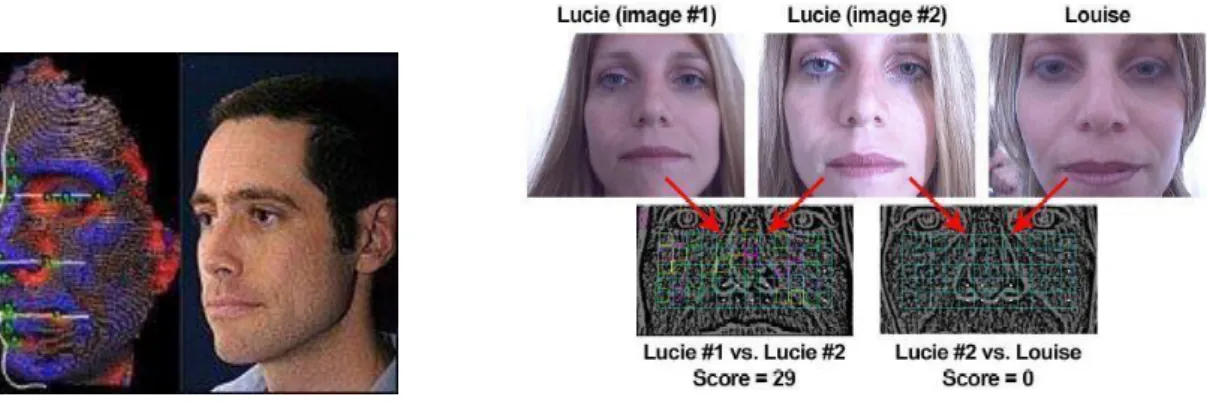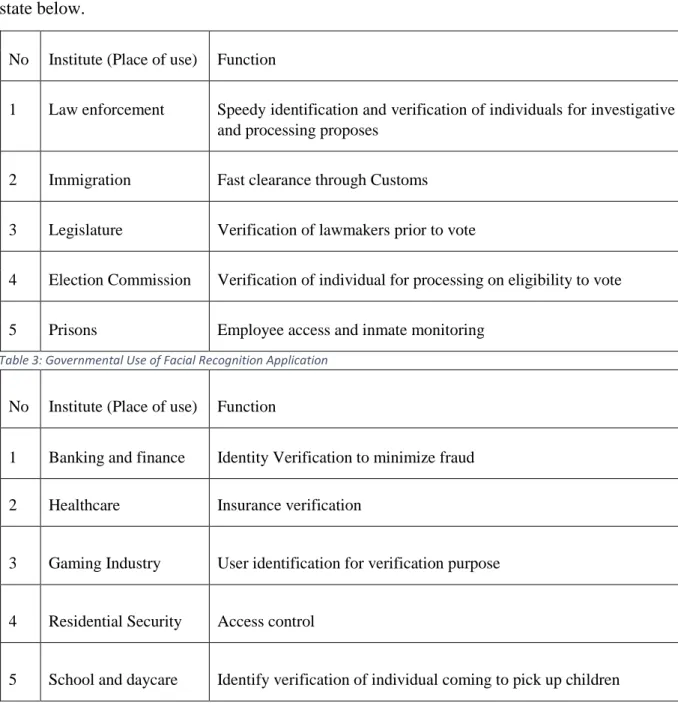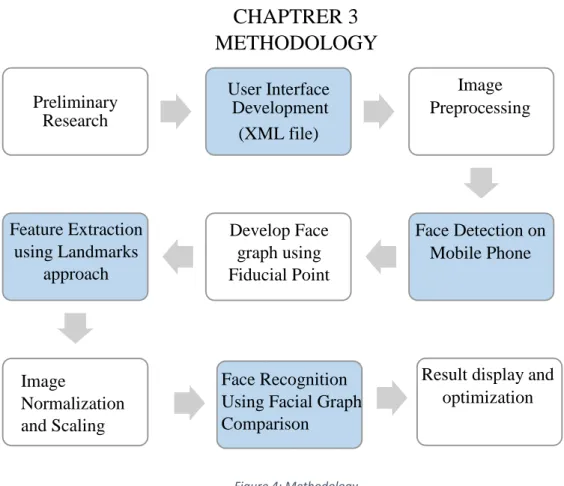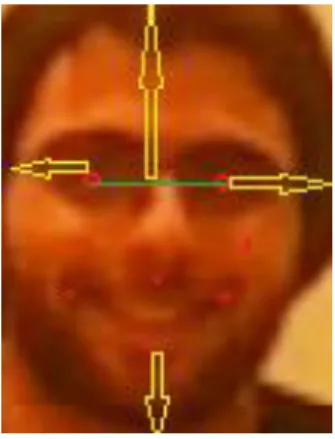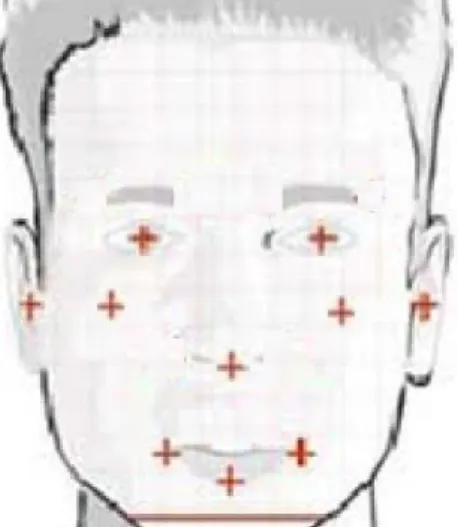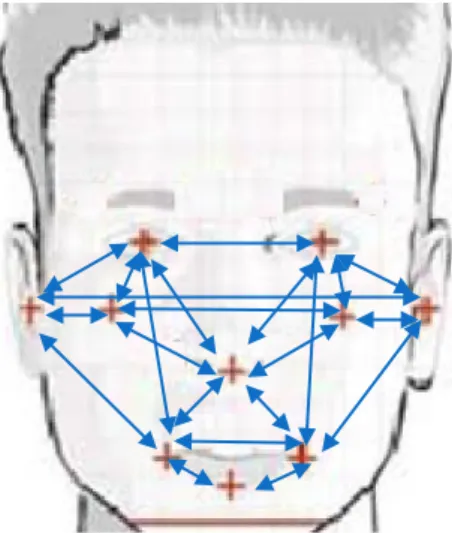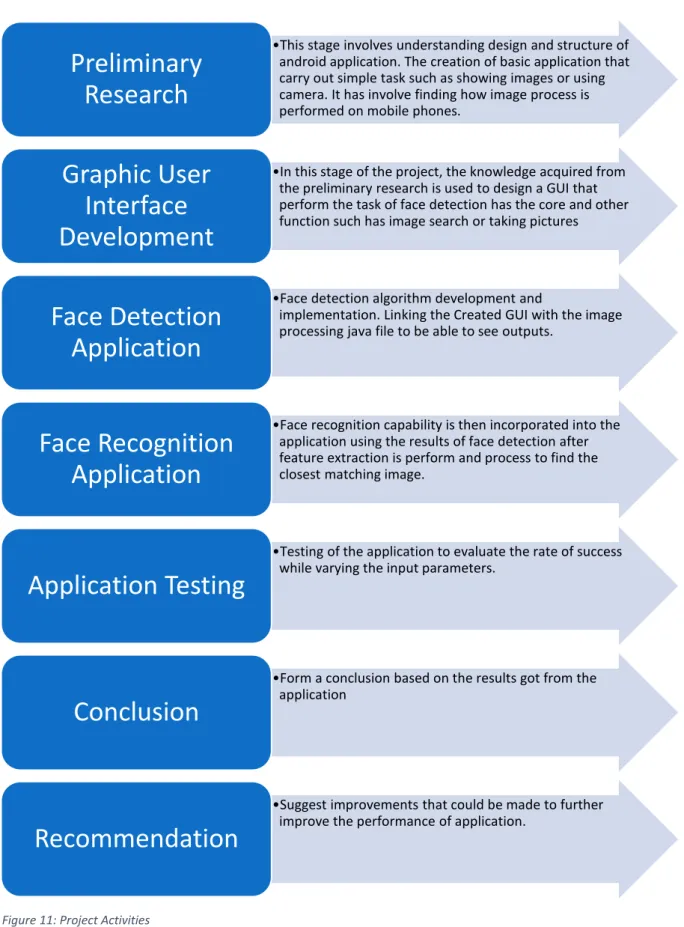This is to certify that I am responsible for the work submitted in this project, that the original work is my own, except as specified in the references and acknowledgments, and that the original work contained herein is not undertaken by unspecified sources or persons or not done. . The level of processing power of cell phones has steadily increased over the past few years and it has now reached a point where there are cell phones that can run large applications with relative success. Applications with facial detection and recognition capabilities have also advanced over the same period to a point where successful facial recognition can be implemented with significantly less processing power.
Thanks to these two advancements, it is now possible to run a facial recognition application on mobile phones. Facial recognition, which is the process of identifying specific people in a digital image by comparing and analyzing patterns [6], is now possible on mobile phones. I have put a lot of effort into the preparation of this report, but the completion of this report would not have been possible without the help of various individuals within and outside my university.
Most importantly, my gratitude goes to Allah for the strength, wisdom and ability to complete this project.
- Background
- PROBLEM STATEMENT
- OBJECTIVE
- SCOPE OF STUDY
- Relevance of the Project
This is written in xml to represent the GUI (Graphic User Interface), what the user of the application sees and can interact with. With the completion of the background and foreground, one can proceed to the development of functions implemented in the Java class file of the Android project. The application would also include a database that can store details of different people, with each entry in the database containing a unique facial graph describing the details of the face in question and which can later be retrieved for verification when the recognition is performed.
The main purpose of the project is to understand and study how image processing could be successfully implemented on mobile phones. The type of image processing done, in which this project could be described as one of the most relevant, because it is related to humans and this type of image processing is present all around us today.
There are several methods that have been recognized to perform the task of automatic face detection very successfully under various conditions. These techniques include feature-based methods, template matching methods, and appearance- or image-based methods, but of the three methods, Zhao & Chellapa, 2006 concluded that appearance- or image-based methods performed best. This could be attributed to the high degree of face similarity and non-face dissimilarity [6], but the extensive training performed by the computer could further help to increase the success rate.
After the task of face detection is completed, the program performs feature extraction to start face recognition. Facial recognition (or facial recognition) application is a software application under the field of biometrics that is able to identify specific individual in a digital image by analyzing and comparing patterns [8], such as between an existing image on a database and a new investigation data [9]. There are numerous techniques that can be used for this purpose that account for all this variation such as facial geometry, skin pattern recognition, facial thermogram, smile recognition, dynamic facial features and others [11] [12].
The application is able to do this by acquiring information about the characteristic features of the face, such as the length or width of the nose, the depth of the eye sockets, the distance between the eyes and the shape of the cheekbones to arrive at numerical codes called facial prints which usually contains (80 nodes for a program of moderate size with good success rate) [13]. But there are challenges in the implementation of facial recognition, when a certain state changes or occurs, this can affect the success rate of the application. These conditions include partial faces that occur due to obstruction or orientation of the face, changes in lighting, application of make-up, use of sunglasses, long hair, and even changes in facial expression such as a large smile [8] [13].
On the other hand, the returns could be huge as the need for facial recognition application is increasing and by bringing it to the mobile platform, thus increasing the portability and convenience of use, the market is sure to expand. Institutions or areas where facial recognition is currently used vary from governmental to non-governmental or commercial, a summary of the places of use and their functions is provided below. 4 Electoral Commission Verification of an individual for the processing of electoral eligibility 5 Prisons Access of employees and control of imprisoned persons.
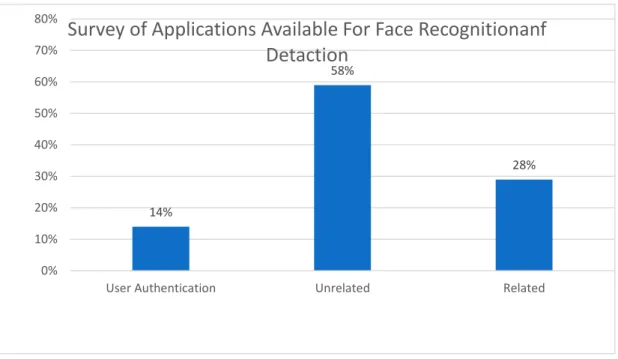
- Image Pre-processing
- Face Detection
- Method 1
- Method 2
- Image Normalization and Scaling
- Feature Extraction
- Facial Recognition using Face graphs
- Project Activities
- KEY MILESTONE
- GANTT CHART FYP 1
- GANTT CHART FYP 2
- TOOL & SOFTWARE REQUIRED
The main purpose of this step is to reduce the amount of noise in the image processed from faces. This is the process of identifying the region of the image that contains human faces. Therefore, the primary method used for detection in this project is skin color, and based on the area of the image where the skin is detected, face localization is then performed using model-based face tracking.
Different models of the human face are compared to the area of the photo where the skin is detected to determine exactly which part of the image contains the face based on geometric features. Facial localization is done with this method by looking for the location of the eyes. Once a face is detected in an image, the way the portion of the image is stored in the database must be uniform for every face in the image and for every image in the database.
The way image normalization and scaling is performed in this project is by first ensuring that each reference point used for feature extraction is in the image and then identifying a constant equal to the distance between the two eyes to surround the entire boundary reference point. . After image normalization and scaling, the image is now ready to be processed to extract more detailed information about the detected face. The image below shows a brief description of the variations in the image that are recognized as which attribute.
The image is being processed using the image segmentation method and then searches it for contours before each segment is linked to the existing face model to identify the specific coordinates where the feature exists. The image below gives an example of templates used to generate face models that are then used for feature extraction. These Loyal Points would return a particular point in the image, which contains an "X" and "Y" value.
In this stage of the project, the knowledge obtained from the preliminary research is used to design a GUI that performs the task of face detection, has the core and other function such as image search or taking photos. Link the created GUI with the image processing java file to see outputs.
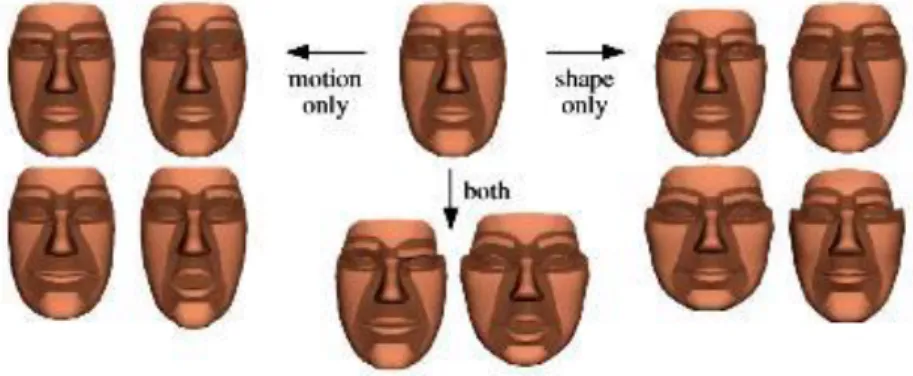
- Results
- Results from Method 1
- Results from Method II
- Detection Rates
- Face Recognition results
- Discussion
After identifying the faces that present the image, it then draws a green rectangle on the area of the image that contains the face. After identifying all the faces present in the image, it then counts the total number of faces present and displays the result to the users as shown in the images below. The app is not only capable of detecting single faces as shown in the previous image but can also detect multiple faces as shown in the figures below.
After obtaining individual faces using the results of the face detection process, the view is then switched to the face recognition platform to start the face recognition process. The first graph shows the detection success rate versus the number of starting points available for it to use in detection. It shows that the maximum recognition success rate of 90% is achieved when ten to nine reference points are available for comparison.
However, when the face returns fisucial points of less than nine, the success rate begins to decrease until the results are no longer reliable, this happens when 5 fiducial points are detected. The second graph, on the other hand, shows the relationship between the distance of the camera from the person where the number of Fiducial moves was recorded. It can be deduced from the graph that the images needed for recognition must be taken from a minimum distance of approx. 20 cm to achieve the best recognition success rate.
Moving further away from the camera would result in less reliable features being detected, resulting in a lower recognition success rate. This help solved the problem of not detecting faces because they are reduced in size or because not all parts of the face are shown in the image (e.g. partially obstructed face, side of faces and faces covered with hair). When capturing, the user does not need to press the detection button for detection to occur; this is programmed to run automatically.
Enhance is also added to the detection button where when a user taps this button, the application detects area of the image that contains faces, automatically adds and saves the detected faces to a new location. The results of the recording are now also saved on the smart, not just cached as previously done, so that previous results could be retrieved.
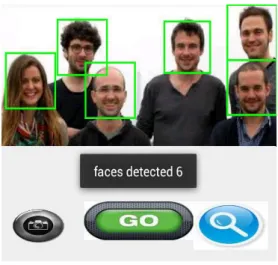
Conclusion
Future Work
Retrieved from http://www2.warwick.ac.uk/. fac/sci/dcs/people/abhir_bhalerao/publications/face-cognition-chapter.pdf. Retrieved fromhttp://www.independent.co.uk/life-style/gadgets- andtech/news/there-are-officially-more-mobile-devices-than-people-in-the-world-. Number of Android apps taken from http://www.App brain.com/stats/number-of-android-apps.
